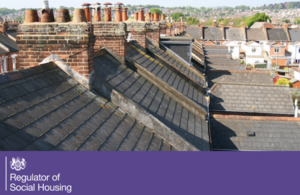Social housing sector stock and rents statistics for 2021/22 show small net increase in social homes
RSH has published its annual social housing sector stock and rents statistics.

Today (25 October 2022) the Regulator of Social Housing published statistics about the social housing sector for both private and local authority registered providers, including stock ownership and rents as at 31 March 2022.
Returns from all registered providers of social housing show that the sector owns 4.4 million homes across England, with a net increase of over 31,000 social homes in the year. The number of Affordable Rent and low cost home ownership homes increased, while the number of social rent homes fell. General needs still makes up the majority of the social housing sector at 83% of all stock, with supported housing at 11% and low cost home ownership at 5%.
Private registered providers built and purchased more homes this year, as activity moved back towards pre-pandemic levels following the ending of Covid-19 restrictions. There has been an overall increase in their low cost rental stock since April 2021, with over 20,000 homes for Affordable Rent being added. However, despite the addition of just over 3,000 homes for Affordable Rent, local authorities saw another decline in their overall low cost rental stock. Both private and local authority providers increased their low cost home ownership stock, with over 18,000 more units owned across the sector in 2022 than in 2021.
As expected, rents increased in the year. The average increase in general needs (social rent) weekly net rents was 1.6%, in line with the limit set for 2021/22. The average weekly general needs (social rent) rent across England was £94.31, with variations across different regions of the country. Rents were lowest in the North East (£78.89) and highest in London (£116.16).
Will Perry, Director of Strategy at RSH, said:
The data from the 2021/22 Statistical Data Return and Local Authority Data Return show the impact of Covid-19 restrictions ending, with greater levels of development and acquisition activity in the period. There is a wealth of data in this year’s returns, which will be of use to anyone interested in social housing in England. It also underlines how good quality data is essential for providers making difficult decisions about future investment in the current economic climate.
Further information
For press office contact details, see the Media enquiries page.
For general queries, please email enquiries@rsh.gov.uk or call 0300 124 5225.
Notes to editors
- Local authority social housing data was formerly collected through the Local Authority Housing Survey. Since 1 April 2020 it has been collected by RSH through the Local Authority Data Return when RSH took on responsibility for the regulation of local authority rents. Private registered provider data has been collected by RSH through the Statistical Data Return since 2012.
- Both local authority and private registered provider stock and rents statistics are designated as National Statistics by the UK Statistics Authority.
- There were 1,614 providers on our register on 31 March 2022. A total of 1,553 providers completed either the LADR or the SDR in 2022. There was a response rate of 100% for the 2021-22 LADR and 96% for the 2021-22 SDR.
- Homes include self-contained units such as houses and flats and non-self-contained bed spaces, referred to collectively as units in the data.
- Of the 4.4m units of social stock owned by RPs, private registered providers own 2.8m units while local authority registered providers own 1.6m units.
- The 64 for-profit providers reported 20,831 units of social stock in March 2022, compared to 13,671 in March 2021.
- From 1 April 2020 rents have been regulated through RSH’s rent standard where the limit on annual increases is CPI + 1%. The Government consultation focusing on the introduction of a rent ceiling for 2023/24 closed on 12 October 2022.
- The Regulator of Social Housing promotes a viable, efficient and well-governed social housing sector able to deliver and maintain homes of appropriate quality that meet a range of needs. It does this by undertaking robust economic regulation focusing on governance, financial viability and value for money that maintains lender confidence and protects the taxpayer. It also sets consumer standards and may take action if these standards are breached and there is a significant risk of serious detriment to tenants or potential tenants.